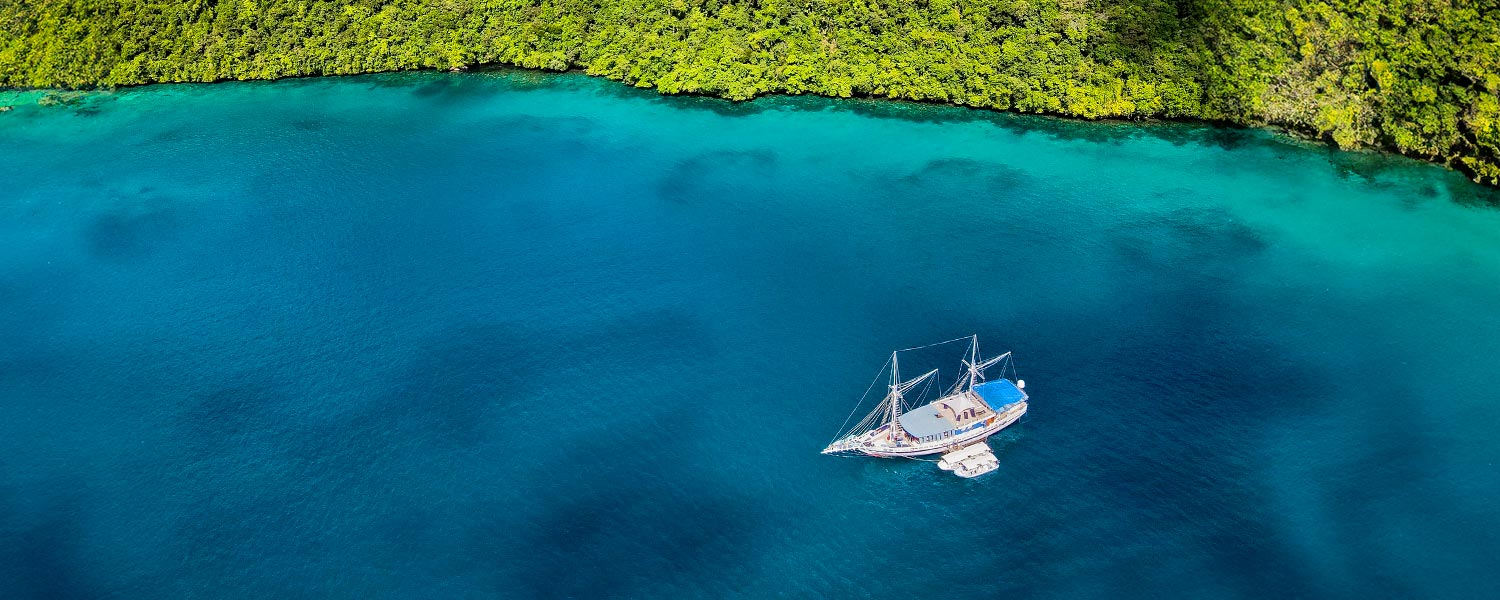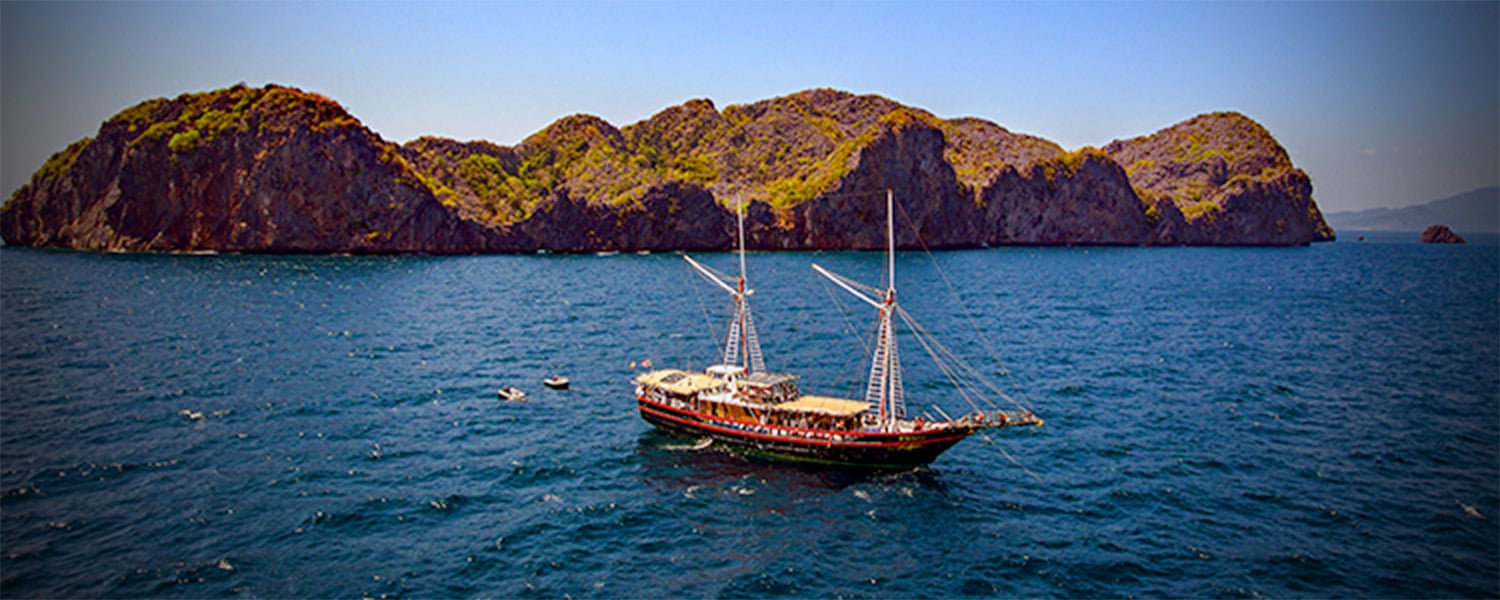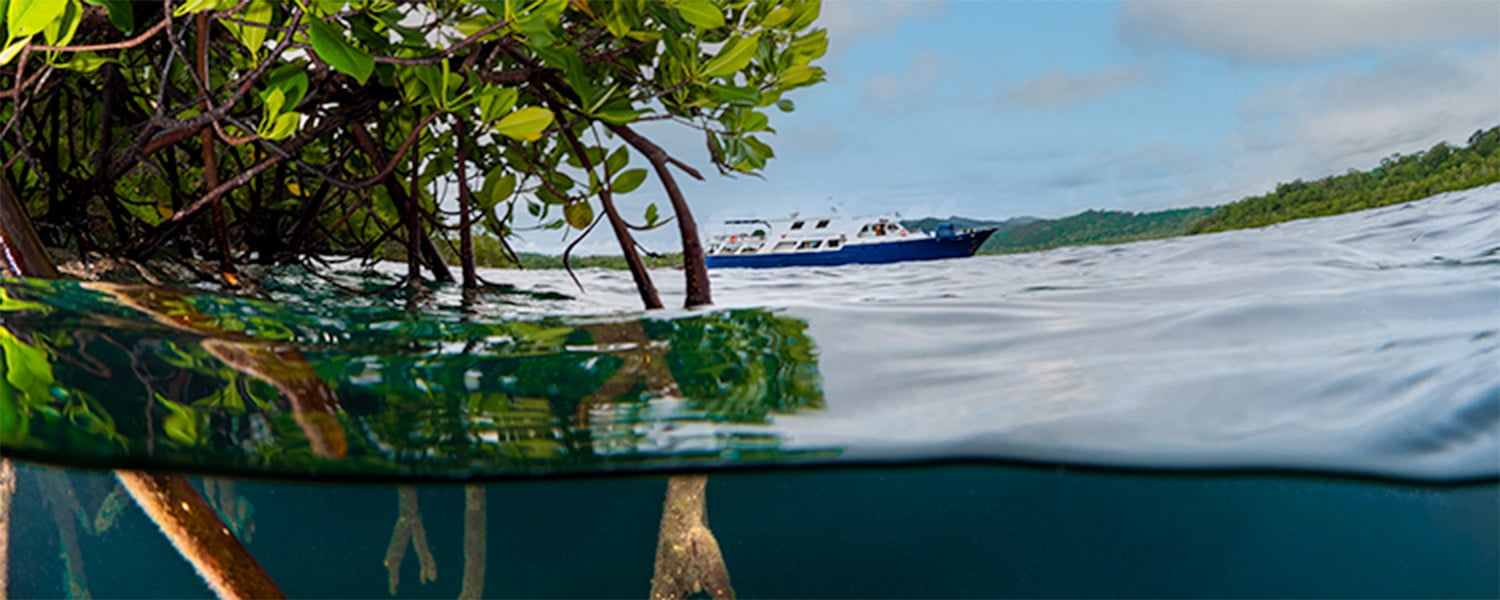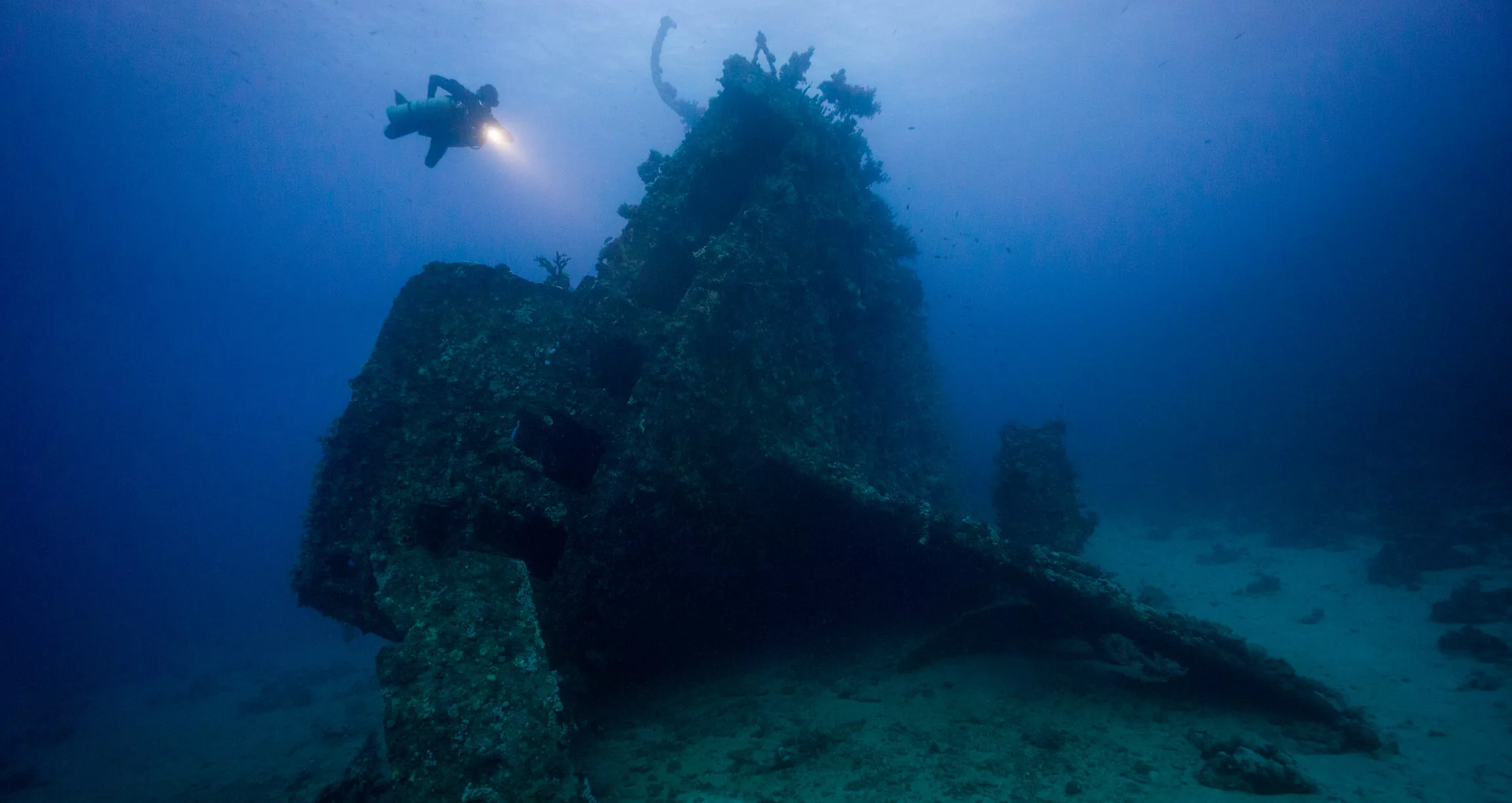Operation Crossroads blew, literally, into life on the 1st July 1946 with the Able Test. Spectators, and a worldwide audience, were remarkably underwhelmed with the result; but that was about to change. The second of three planned tests, the Baker Test, was about to blow expectation out of the water.
Preparations Begin
Following the initial test on 1st July, the vast majority of the nuclear fleet was still in place within Bikini Atoll. Some of the ships were pretty battered, but they were ‘cleaned’ and prepped for round two. This included making repairs to ensure that all vessels were completely water tight. Boiler repairs were also made so that they could all steam under their own power.
Everything was now ready and the 68 target ships anchored at their allotted spots in the lagoon. Six of the eight submarines submerged. Then the star of the show, a second Fat Man plutonium bomb, was lowered carefully into the water inside a watertight steel caisson. ‘Helen of Bikini’ was suspended 27.4 metres (90 feet) below landing craft LSM-60, that was significantly modified for the task.

Testing instruments were checked and rechecked. Pigs and rats were dotted around the fleet in order to see the effects on living mammals. Finally, all support vessels and personnel were evacuated from the lagoon. Almost. Three Navy sailors were somehow still onboard the target ship USS Gasconade. Having hung the yard arms with bunting, they were spotted and evacuated only 3 hours prior to the detonation.
The Blast
Following the ‘air burst’ of the initial explosion, the Baker Test was a shallow water explosion, to compare the effect on the fleet. Nothing like this had ever been tried before, so nobody really knew what might happen. There were theories of course, but nobody really knew. We found out pretty quickly…
What happened on the 25th July 1946 was, depending on your point of view, pretty impressive.
0 seconds to 0.004 seconds
The detonation created a fast growing gas bubble. This began to produce a crater on sea bed while simultaneously pushing water above into a dome of spray
0.004 seconds to 1 second
The lagoon is essentially empty within a 500 feet radius of the explosion. Somewhere in the region of 2 million tons of sea water, sand, and landing craft LSM-60 are thrown into the air at 760 metres per second. What started as a bubble expands to become a hollow chimney of spray 1,800 metres tall and 600 metres across. The middle 430 metres of the chimney are empty.
1 second to 11 seconds
Following the initial supersonic shockwave, the low pressure behind causes instant fog, hiding everything behind a “Wilson Cloud” for a couple of seconds. As the cloud swiftly disappears, the fully formed chimney is visible as it begins to slow its ascent.

At the same time, water from the lagoon is flooding into the empty space created by the explosion. This causes a tsunami that lifts ships as it passes. The first wave is now 300 metres from the explosion and almost 30 metres tall.
11 seconds +
The chimney falls back into the lagoon causing a 275 metre “base surge”. This surge rolls over the fleet, essentially covering them in a highly radioactive sheen. The tsunami makes it’s way to Bikini Island itself, hitting the shore with a height of around 5 metres. The landing craft there thrown on to the beach and filled with sand.
Fallout from the Baker Test
The initial and immediate effect of the explosions was the sinking of nine vessels either immediately, or soon after. These included such huge ships as Saratoga (aircraft carrier), Arkansas (dreadnought), Nagato (super-dreadnought), as well as three submarines. Eight more ships were classed as immobilised or seriously damaged by the Baker Test. One of these was the heavy cruiser Prinz Eugen, which would be added to the list of those lost as she capsized in Kwajalein five months later.
The greatest difference between the Able and Baker Tests was the radioactive contamination of all the target ships by Baker. According to the initial report by the JCS Evaluation Board, the radioactive hazard produced by the spread of water was so dangerous that…
“after 4 days it was still unsafe for inspection parties operating within a well-established safety margin, to spend any useful length of time at the center of the target area or to board ships anchored there.”
Higher contamination than Able was anticipated, but it was even greater and caused more problems than expected. When support ships finally entered the lagoon for evaluation, decontamination, and salvage activities, they steered clear of lagoon water hot spots detected by drone boats. Personnel only boarded the most distant target ships at first. For most of the ships, re-boarding had to wait until the short-lived radioisotopes decayed. It was only ten days later when the last of the targets was boarded.
Cleaning up the Baker Test
Following the Able test, servicemen effectively hosed down and brush cleaned the target vessels. This seems astounding to us today but, in actual fact, the radioactive contamination of the vessels was remarkably low. The initial burst of radiation from the blast lasted a few seconds but dosed the ships close to the detonation point with neutron and gamma radiation. While this quick, but heavy, dose would have been lethal to humans, it did not make the ships radioactive.

The Baker Test, however, was very different. The base surge, that was created as lagoon water fell back into its proper place, was expected; but not on the scale it actually happened. While it looks like a wave on footage, it was in fact a very dense cloud mist, spray, and air. Effectively this mist was carrying huge amounts of fissionable product that it simply left on every surface it touched. When the water evaporated, the radiation remained.
Compounding the problem
This problem also effected support ships that were beyond the reach of the radiation during the explosion. As they entered the lagoon to assist in collecting data or in the clean up itself they were pulling lagoon water into their cooling systems. This water was, of course, radioactive and so these ships became contaminated as well.

For almost two weeks, various methods were used to try to clean the vessels that had been irradiated. Water was sprayed across them by fire ships, although as the water being sprayed was from the lagoon it was not too much help. Decks and hulls were ‘strenuously scrubbed’ (as useless as it sounds), chemicals were applied, but nothing seemed to work. On the 10th August this all came to a head.
Calling a halt
Colonel Stafford Warren, the Chief of the Radiological Safety Section for Operation Crossroads, had decided he had seen enough already on the 3rd August. In the absence of proper decontamination protocol, he was of the strong feeling that the methods were both ineffective and dangerous. Especially as many of the sailors doing the cleanup had no protective clothing and were carrying their contamination everywhere they went. He was most concerned about plutonium, which was undetectable directly on site, and voiced his opinion.
This wasn’t enough for Admiral Blandy though. As you may remember, he was the Joint Task Force Commander and needed quite some convincing. In fact, it took a week and even then he made Colonel Warren explain directly to 1,400 men why they needed to stop what they were doing. On the 9th August, plutonium was found in the officers quarters of Prinz Eugen. Warren also showed Blandy an x-ray of a surgeon fish that was taken by simply laying the fish on a photographic plate for a while. This seemed to do the trick and all clean up operations were cancelled.

There was a third test in the plan for Operation Crossroads, but the failed clean up called an end to proceedings. The vessels couldn’t be effectively cleaned so they could not be prepared for the Charlie Test. As such, Operation Crossroads came to an end. Of course, the dust needed to settle, the reports needed to be written, and the conclusions needed to be drawn. But, the action was done…for now. Atomic testing in the Pacific had only just begun.
Read more and book
Click here to read more about the 75 anniversary of Operation Crossroads or the initial Able Test. Alternatively, to book your space to see the nuclear fleet, head to our Bikini Atoll page.



